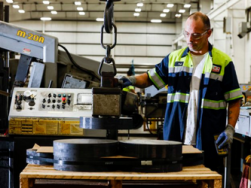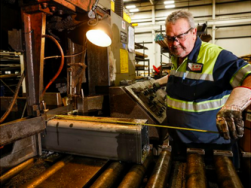State of Steel - April 2023
Pricing - Have we hit the high, again?
Structural steel pricing has been on the rise since January and seems to finally be leveling off. After 6 months of mill increases, we have now seen the first week of level CRU prices week over week. For months, structural tubing has been a highly competitive marketplace and continues to be. Look below for a detailed graph of all structural tube increases or decreases since 2022.
With structural tubing beginning to level off at a high, mechanical tube pricing continues to remain elevated. Lead times do appear to have shortened in recent months however we are hearing that lead times are getting pushed back out. Due to weak imports and limited producers, pricing looks to remain somewhat high. Scrap surcharges have increased over the last few months and now sit at $87/ton. DOM mills have announced that they will now be paying the price in effect based on the “Ready-to-Ship” date. This puts pricing closer to market conditions. Reference below for a graph of price adjustments since 2021 (went up then and hasn’t come down).
The CRU index (below chart) came in at $1,195/ton this week. Last week it was $1,203/ton. Week over-week change was -$8/ton. It appears that we have hit a new plateau for now. We have seen CRU increases since the beginning of the year until this week. Nucor announced an attempted $40/ton plate price increase with the opening of its June order book. This marks Nucor’s second plate price increase this year, following a $50/ton increase in mid-March



Cast Iron Pricing
There have not been any base price increases on cast iron since April 1st of 2022. Dura-Bar’s surcharges appear to have hit bottom in December and have now seen increases over the last 4 months in a row. The below chart details the Dura-Bar surcharges over the last year or so.

Scrap & Steel Inputs
The April scrap trade was largely completed last week with shredded scrap prices flat to down $25/ton month-over-month, depending on the region, and prime scrap prices flat. Looking out to May, market sources currently expect scrap prices will likely decline month-over-month, given seasonally stronger collections and a currently softer export market. (Source: Platts)
Metal Production
In the week ended April 15, US raw steel production increased 0.7% week-over-week to 1,687,000 tons (-5.6% YoY). US capacity utilization was 75.0% vs 81.9% last year. This marks 40 consecutive weeks where capacity utilization has been below 80%. Year-to-date production is 24,970,000 tons, down 4.4% year-over-year from 26,111,000 tons last year. (Source: AISI)
Lead Times
Understanding lead times for steel products are important to every participant in the supply chain. Lead times for steel products are as follows (as of 04/21/23):
Average HRC lead times were lower last week at 8.3 weeks, which is still above the long-term average of 5.6 weeks since 2016. Other product lead times were mixed with CRC lead times at 8.4 weeks, HDG lead times at 8.1 weeks, and plate lead times at 9.3 weeks. (Source: Platts)
DOM Tubing lead times continue to be long and seem to have tightened again. We are now anywhere from 12 to 30 weeks. HRS and CDS tubing are long as well (15-30 weeks) due to a lack of steel tube hollows, demand, contract business, and labor shortages.
Structural Tubing mill lead times are reasonable and running approximately 3-5 weeks upon receipt of the order. Common sizes we can get sooner for now.
Dura-Bar Continuous Cast Iron mill lead times are approximately 3-5 weeks depending on size, grade, and finish. If it’s a large bar, special grade, size, or shape then the lead time could be considerably longer.
Oil & Gas Industry
The US rig count decreased 0.4% week-over-week to 748 rigs as of 4/14. The rig count is up 7.9% year-over-year. (Source: Baker Hughes)
Imports/Exports

Economic Factors
North American automotive production is expected to rise to 15.57 million vehicles in 2023, according to AutoForecast Solutions' latest forecast. (Source: AutoForecast)
The ISM’s monthly PMI index declined for a fifth consecutive month, registering 46.3% in March. This was 1.4 points lower than the prior month and the lowest level recorded since May 2020. (Source: SMU)
Employment / Hiring
Approximately 0.245 million Americans filed for unemployment insurance last week. This was worse than economists’ expectations of 0.240 million claims, and worse than last week’s upwardly revised claims number of approximately 0.240 million claims (revised up from 0.239 million claims). Continuing claims also increased during the week ending April 8 (continuing claims have a week lag in terms of reporting) and stand at approximately 1.865 million continuing claims. (Source: Reuters)






